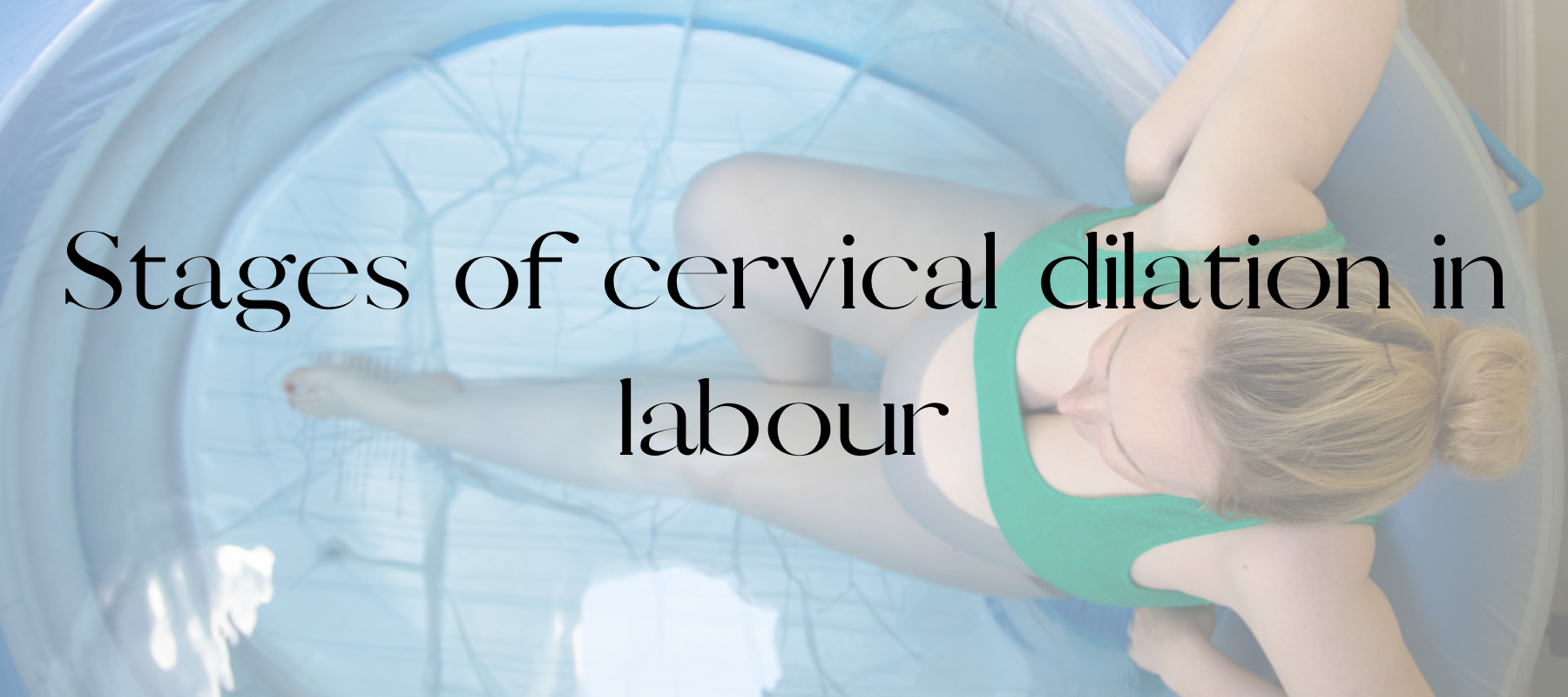What is labour?
Labour is a natural physiological process characterised by uterine contractions, cervical effacement, and cervical dilation, which together facilitate the baby’s transition from the uterus to the outside world.
Cervical dilation is a fundamental aspect of labour and refers to the opening of the cervix, measured in centimetres from 0 to 10, which is essential for the baby's passage through the birth canal.
Labour is a complex interplay of hormonal, physiological, and mechanical factors that can be interrupted by complicating elements. Understanding the stages of cervical dilation and how they may present is crucial for providing effective care and support to labouring women.
What is the first stage of labour?
Latent Phase:
The latent phase, also known as early labour, begins with the onset of mild, irregular contractions. It may also include symptoms such as period pain, lower back pain, frequent bowel motions, nausea/vomiting, mucous show and SROM (spontaneous rupture of membranes). During this phase, the cervix “ripens” preparing for the active stage of labour. This involves the cervix slowly dilating from 0 to approximately 3-4 centimetres, gradually thinning (effacement), softening and moving forward with decent of the baby's head. This stage can last for several hours to days, particularly for first-time mothers. “The latent phase is generally considerably longer and less predictable with regard to the rate of cervical change than is observed in the active phase.” It is extremely important to provide reassurance and support during this phase whilst encouraging relaxation techniques to manage discomfort.During this phase, mothers are often encouraged to stay at home, rest and prepare for ‘active labour’.
Active Phase: The active phase is characterised by regular, strong contractions occurring approximately 3-4 times in 10 minutes, each lasting about 60 seconds. Contractions become more intense and follow a clear pattern. During this phase, cervical dilation progresses from 3-4 centimetres to full dilation (10 centimetres). The duration of this stage varies based on factors such as the context of labour, the support provided, analgesia options, and whether the mother is experiencing her first labour (primiparous) or has laboured before (multiparous). Continuous assessment of the foetal heart rate and the mother's response to labour is essential to ensure the well-being of both mother and baby. Pain management strategies, including pharmacological and non-pharmacological options, may be discussed with the mother during this phase.
What is the second stage of labour?
The second stage of labour begins with complete cervical dilation and ends with the birth of the baby. After reaching full dilation, women may experience a strong urge to ‘bear down’ or push, known as the expulsion phase, others may be guided during this time. This stage can last from a few minutes to several hours, depending on factors such as the baby’s position, the mother’s fatigue, being a first or subsequent labourer and the effects of an epidural. Research indicates that with epidural analgesia, both the first and second stages of labour are longer). Additionally, upright positions v’s recumbent (lying flat) in the second stage, showed that with upright postures the second stage of labour is shorter and episodes of severe pain less frequent.
What is the third stage of labour?
The third stage involves the delivery of the placenta following the birth of the newborn and can be managed in two ways: physiological or active.
Physiological: This approach involves skin-to-skin contact, early breastfeeding, and allowing the placenta to be delivered naturally. This process can take approximately 30-60 minutes.
Active: This method includes an intramuscular injection of syntocinon (oxytocin) and controlled cord traction to assist in the delivery of the placenta, reportedly reducing the risk of postpartum haemorrhage. The placenta is usually delivered within 15-20 minutes following the birth of the newborn.
In summary, cervical dilation is a key indicator of labour progress, divided into distinct phases that require tailored care and attention. Cervical dilation should always be assessed in the context of the overall well-being of both the foetus and the mother to ensure a safe and positive labour experience. Understanding and managing these stages effectively enables caregivers to support individuals throughout the labour and birth process.
References
American College of Obstetricians and Gynecologists. (2019). Practice bulletin no. 205: Vaginal birth after cesarean delivery. Obstetrics & Gynecology, 133(2), e110-e125.
Evbuomwan O, Chowdhury YS. Physiology, Cervical Dilation. [Updated 2023 May 16]. In: StatPearls [Internet]. Treasure Island (FL): StatPearls Publishing; 2024 Jan-. Available from: https://www.ncbi.nlm.nih.gov/books/NBK557582/
Gherman, R. A., Goodwin, T. M., & Gutman, S. G. (2017). Management of labor. In A. S. C. McDonald & C. J. L. Goffman (Eds.), Williams obstetrics (25th ed., pp. 261-280). McGraw-Hill Education
Hutchison J, Mahdy H, Hutchison J. Stages of Labor. [Updated 2023 Jan 30]. In: StatPearls [Internet]. Treasure Island (FL): StatPearls Publishing; 2024 Jan-. Available from: https://www.ncbi.nlm.nih.gov/books/NBK544290/
Enkin, M., Keirse, M. J. N. C., Neilson, J. P., Crowther, C. A., & Duley, L. (2004). A guide to effective care in pregnancy and childbirth (3rd ed.). Oxford University Press.



